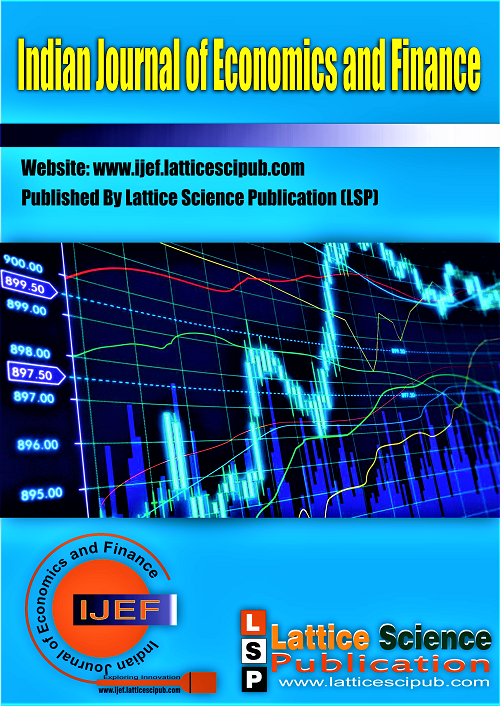The Contributory Pension Scheme (CPS) and Sufficiency of Retirement Benefit of the Low-Income Retirees of the Federal Public Service in Nigeria
Main Article Content
Abstract
This study examined the level of sufficient retirement benefit under the contributory pension scheme emanating from the pool of savings contributed that can suffice to provide the minimum needed livelihood. The secondary data of all pension contributions and retirement benefits were retrieved from series of publications of Pen Com from the years 2004 to 2022. The primary data population consists of 1316 retirees. EasyFit 5.6 Professional Software together with the Least Square Model, accumulation and annuity formulae was employed to analyse the secondary data and the responses from the respondents during survey. Arising from the data collected and the analysis carried out using the Consolidated Public Service Salary Structure, the level of comfort of low income retirees who spent 20 to 35 years in active service is nothing to write home about due to insufficient pension benefits as a result of the challenges investigated. The study recommends the implementation of minimum pension derived with requisite modalities of 20 years as the minimum qualifying length of service and only 10-year post retirement subsidy.
Downloads
Article Details

This work is licensed under a Creative Commons Attribution-NonCommercial-NoDerivatives 4.0 International License.
How to Cite
References
Agarwal, K., Malik, S., Mishra, D.K., & Paul, D. (2021). Moving from Cash to Cashless Economy: Toward Digital India. Journal of Asian Finance, Economics and Business, 8, 43-54. https://doi.org/10.13106/JAFEB.2021.VOL8.NO4.0043
Behera, S. & Balaji, P. (2019). Cashless Economy: The Dream Of Digital India. International Journal of Management, Technology And Engineering, 9(4), 5629-5636.
Chavda, V. (2018). An Empirical Study on Factors Affecting Consumer Adoption Of Mobile Payments In Rural Area. Sankalpa: Journal of Management & Research, 8(1), 64-71. https://doi.org/10.1504/IJENM.2018.10015851
Hasan, A., Aman, M. A., & Ali, M. A. (2020). Cashless Economy in India: Challenges Ahead. Shanlax International Journal of Commerce, 8(1), 21–30.
https://doi.org/10.34293/commerce.v8i1.839
Joshi, S., Purohit, D.N. & Vyas, A. (2019). Increase in number of Online Services and Payments through Mobile Applications Post Demonetization. Advances In Management, 12 (1).
Kafley G. S. & Chandrasekaran, M. (2019). E-Payment System In Rural India: Issues And Challenges. SELP Journal of Social Science, 10(40). @ www.iaraindia.com
Ranjith, P.V., Kulkarni, S. & Varma, A. J. (2021). A Literature Study Of Consumer Perception Towards Digital Payment Mode In India. Psychology and Education, 58(1), 3304-3319. https://doi.org/10.17762/pae.v58i1.1270
Sarika, P. & Vasantha, S. (2019). Impact of Mobile Wallets on Cashless Transaction. International Journal of Recent Technology and Engineering, 7(6).
Singh, S. & Rana, R. (2017). Study Of Consumer Perception Of Digital Payment Mode. Journal of Internet Banking and Commerce, 22(3).
Singhal, R. & Gupta, A. (2021). Impact Of Covid-19 On Digital Payment Services At Towns And Villages. International Journal of Creative Research Thoughts, 9(5), 585-594.
Tiwari, T., Srivastava, A., & Kumar, S. (2019). Adopting of Digital Payment Methods in India. International Journal of Electronic Finance, 9 (3), 217-229. https://doi.org/10.1504/IJEF.2019.099058
Uberti, L. (2022). Interpreting logit models. The Stata Journal .Madhuri, M. V., & Sangameswar, Dr. M. V. (2019). Encryption Technique to Optimize Information Leakage in Multi Cloud Storage Services. In International Journal of Engineering and Advanced Technology (Vol. 8, Issue 6s, pp. 1078–1081). https://doi.org/10.35940/ijeat.f1002.0886s19
Kumar, S., & Sharma, J. (2020). Comparative Analysis of Prepaid Payment Before COVID 19 and Now: A Case of India. In International Journal of Management and Humanities (Vol. 5, Issue 1, pp. 7–11). https://doi.org/10.35940/ijmh.a1116.095120
Bakshi, Dr. R., & Watts, Dr. S. (2019). Conclusive Research Design and Development of Digital India Campaign: Scope and Challenges. In International Journal of Recent Technology and Engineering (IJRTE) (Vol. 8, Issue 4, pp. 7899–7903). https://doi.org/10.35940/ijrte.d9503.118419 3.
Hasan, Dr. S. B. (2022). Ala-ul Mulk: A Political Genius and Confidant of Alauddin Khalji. In Indian Journal of Social Science and Literature (Vol. 1, Issue 3, pp. 5–8). https://doi.org/10.54105/ijssl.c1054.031322 4.
Rana, R. (2022). Covid-19 Paralyzing the Backbone of Indian Economy. In Indian Journal of Economics and Finance (Vol. 2, Issue 2, pp. 9–11). https://doi.org/10.54105/ijef.c2512.111422





